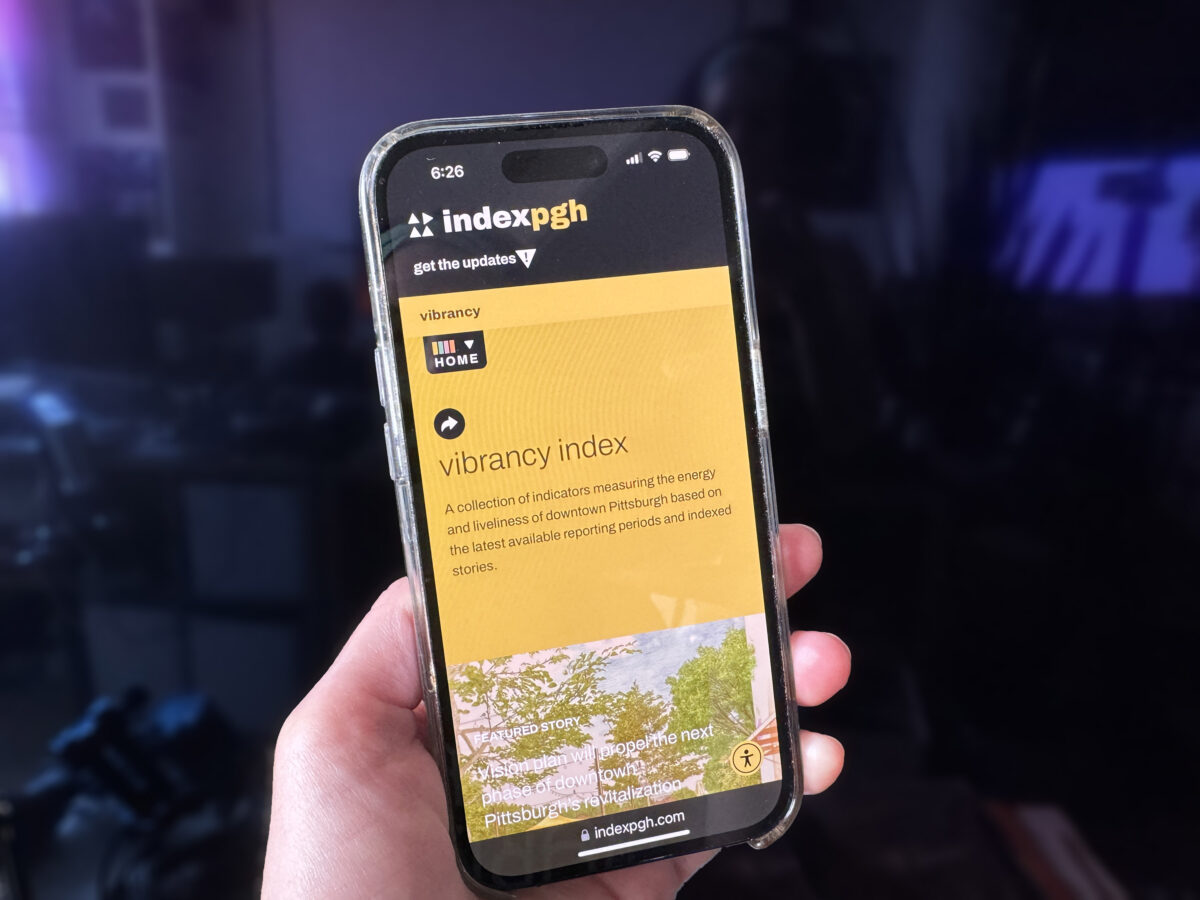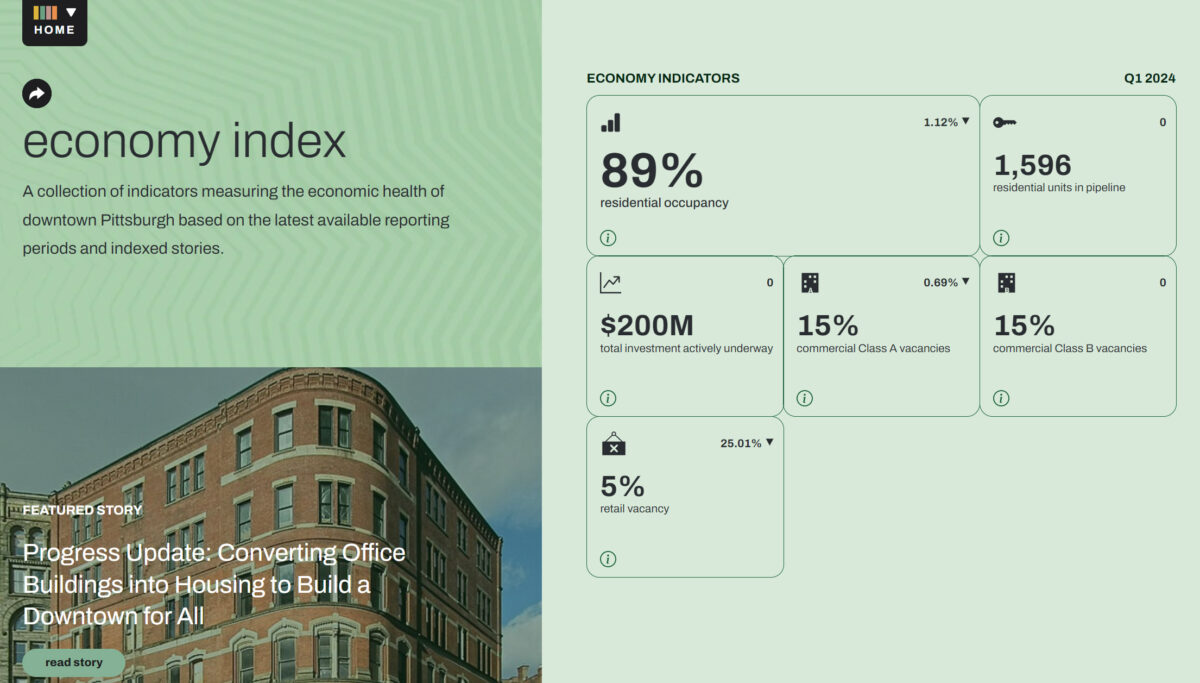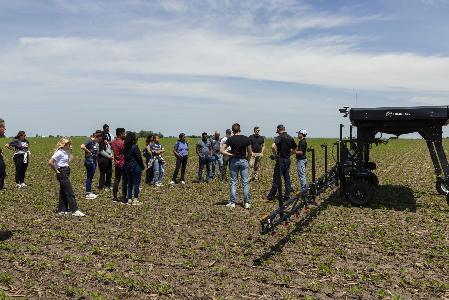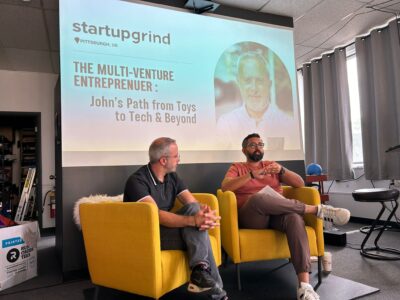Pittsburghers interested in how downtown is faring have something pretty unique for city dwellers in the US — a one-stop resource that transparently tracks and communicates progress.
Called IndexPGH, the online dashboard is an outlier because it does something challenging: brings dozens of data sources from a variety of local agencies and departments under one roof.
Launched in August of last year, it collects and tracks data to tell the story of development in the neighborhood.
The idea was born out of necessity, according to Josie Schultz, vice president of policy and advocacy communications at Allegheny Conference on Community Development, which led its creation. There wasn’t a consistent voice or central location for this information — which can be useful to people in both personal and professional ways.
“IndexPGH is a vital resource,” Schultz said, “offering a centralized platform where residents, employees, visitors and employers can access real-time data on downtown Pittsburgh’s vibrancy, economy, cleanliness, beautification, safety and public health.”
One of the most striking aspects of the dashboard is the level of collaboration involved.
The Allegheny Conference worked closely with partners like the Pittsburgh Downtown Partnership, the City of Pittsburgh, the Urban Redevelopment Authority, the Cultural Trust and various others. A total of 22 organizations are listed in the website’s partners section.
“We call it the ‘Pittsburgh way,'” Schultz said, “which means getting everyone — public, private, and nonprofit sectors — rowing in the same direction.”
Wrangling the data — and using it to tell stories
Building IndexPGH came with its share of challenges, particularly in integrating diverse data sources.
The “Vibrancy Index” pulls in info about bike share rides, hotel occupancy and return-to-office recovery, for example — and each of these data points is tracked by a different entity. The “Economy Index” shows stats about both commercial vacancy and residential occupancy. The two other multi-pronged categories are “Safety + Public Health” and “Cleanliness + Beautification.”
It took manual effort to bring all the information together, per Schultz, of the Allegheny Conference.
“Everybody’s data feeds in through different sources, so getting things integrated in a manner that worked across the board was a challenge,” she said. However, she added, that challenge also presented an opportunity for organizations and teams to streamline and improve their data collection methods. Going forward, they’re looking for ways to make the process more automated.
And when it comes to understanding the heartbeat of downtown Pittsburgh, Schultz said, the numbers alone don’t tell the whole story. Context is crucial — it’s what turns data into insights about real dynamics.
We didn’t just want to show data points; we wanted to tell the stories behind those numbers.Josie Schultz Allegheny Conference
For instance, high crime rates might indicate better reporting, not more crime. A spike in unemployment could mean more graduates entering the job market. Declining public transport use might be due to a popular new bike-share program. Rising housing prices could signal economic growth and demand. Improved air quality might result from new environmental policies.
“We didn’t just want to show data points; we wanted to tell the stories behind those numbers,” Schultz said. “Context is what makes the difference between a static report and a dynamic tool for revitalization.”
So IndexPGH also publishes “featured stories” alongside the data, sharing details on partner updates or Q&As with workers on the ground.
Turning the numbers into experiences
While IndexPGH wasn’t a direct response to COVID, the need to reimagine downtown Pittsburgh became even more pressing post-pandemic, according to Schultz.
“We can’t be the heavy commercial office space-focused downtown of the past,” she said. “We need to deliver more of a neighborhood feel, there should be something for everybody in downtown. We need to create a more inclusive, diverse and vibrant downtown.”
The Pittsburgh Downtown Partnership’s Views and Brews events, for example, combine open-house tours with local brewery tastings. Its pop-up program also supports businesses like Refillery, helping it establish a downtown presence and attract new shoppers.
“They’re bringing people together, activating them not only on the vibrancy side but also boosting the economy,” Schultz said.
On the same front, the Cultural Trust plays a crucial role with events like the Three Rivers Arts Festival, dra—wing people downtown and creating a lively atmosphere.
“They’ve done a fantastic job of providing programming for art lovers while also revitalizing and elevating vibrancy,” Schultz said. Together, these organizations’ coordinated efforts contribute to a more dynamic and economically thriving downtown.
For cities looking to replicate Pittsburgh’s success, Schultz offers clear advice: prioritize partnership.
“In retrospect, one thing we might have done differently is to engage our partners sooner in the process. Getting together and being on the same page before launching is crucial,” Schultz said. “It’s about working together for one vision, with several voices unifying into one.”
Before you go...
Please consider supporting Technical.ly to keep our independent journalism strong. Unlike most business-focused media outlets, we don’t have a paywall. Instead, we count on your personal and organizational support.
3 ways to support our work:- Contribute to the Journalism Fund. Charitable giving ensures our information remains free and accessible for residents to discover workforce programs and entrepreneurship pathways. This includes philanthropic grants and individual tax-deductible donations from readers like you.
- Use our Preferred Partners. Our directory of vetted providers offers high-quality recommendations for services our readers need, and each referral supports our journalism.
- Use our services. If you need entrepreneurs and tech leaders to buy your services, are seeking technologists to hire or want more professionals to know about your ecosystem, Technical.ly has the biggest and most engaged audience in the mid-Atlantic. We help companies tell their stories and answer big questions to meet and serve our community.
Join our growing Slack community
Join 5,000 tech professionals and entrepreneurs in our community Slack today!








